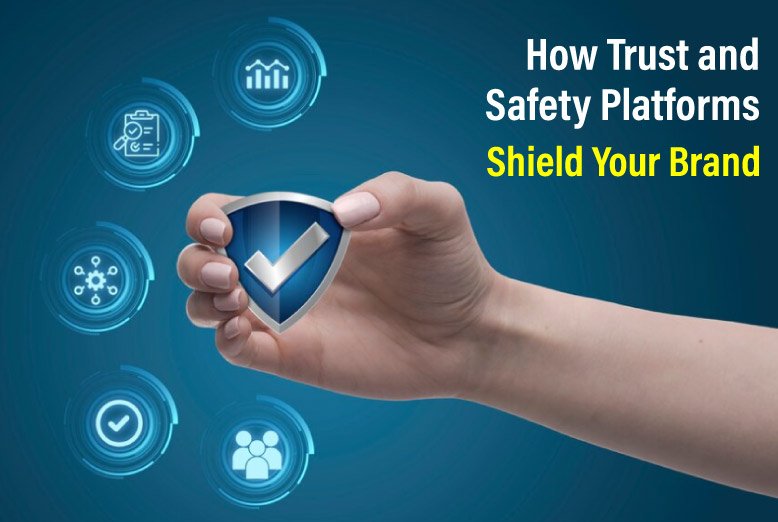In the digital age, trust and safety platforms have become indispensable tools for protecting your brand’s reputation and ensuring the safety of your online community.
As the internet continues to evolve, so do the threats and challenges that brands face. From cyberattacks to harmful content and fraud, businesses need to invest in comprehensive solutions to safeguard their brand image and maintain the trust of their customers. Explore the various aspects of trust and safety platforms and how they play a pivotal role in brand protection.
What are Trust and Safety Platforms?
Trust and safety platforms are comprehensive systems designed to monitor, analyze, and mitigate risks and threats associated with online brand presence. These platforms combine various tools and technologies to ensure a safe and trustworthy environment for users and brand stakeholders. They serve as the first line of defense against a wide range of risks, from online abuse to data breaches.
The Importance of Brand Protection
Your brand’s reputation is one of your most valuable assets. It influences customer trust, loyalty, and the overall success of your business. Any negative incident or security breach can tarnish your brand image, which can take years to rebuild. Trust and safety platforms are essential for safeguarding your brand’s reputation by proactively addressing potential risks.
Identifying Online Threats to Your Brand
To protect your brand, you first need to understand the threats it faces. These threats can include online harassment, cyberattacks, intellectual property violations, misinformation, and more. Trust and safety platforms employ advanced algorithms and data analysis to identify and categorize these threats, allowing your brand to respond effectively.
Proactive Monitoring and Detection
Trust and safety platforms continuously monitor online platforms, including social media, websites, and forums, to detect potential threats and harmful content. They employ artificial intelligence and machine learning to identify patterns and anomalies that may indicate a problem. By being proactive in monitoring, these platforms enable swift responses to emerging threats.
Content Moderation and User Guidelines
Content moderation is a key component of trust and safety platforms. They enforce user guidelines and community standards, ensuring that content shared on your platforms adheres to these rules. Inappropriate, offensive, or harmful content is removed promptly, preventing damage to your brand’s image and the safety of your users.
Fraud Prevention and User Verification
Fraud prevention and user verification are critical aspects of online security, particularly in the context of e-commerce, financial services, and other digital platforms. Protecting against fraud and verifying the identity of users helps maintain trust, ensure compliance with regulations, and safeguard sensitive information. Here are some key concepts and strategies for fraud prevention and user verification:
- Two-Factor Authentication (2FA): Implement 2FA to add an extra layer of security. It typically involves something the user knows (password) and something the user has (e.g., a one-time code sent to their mobile device).
- Know Your Customer (KYC): KYC regulations require businesses to verify the identity of their customers. This can involve collecting and verifying personal information, such as government-issued IDs, to ensure users are who they claim to be.
- Anti-Phishing Measures: Educate users about phishing attacks and how to recognize them. Implement email and website verification checks to help prevent users from falling victim to phishing scams.
- Device Fingerprinting: Analyze and identify unique characteristics of a user’s device, like IP address, hardware, and software configurations, to detect suspicious behavior.
- Behavioral Biometrics: Analyze how users interact with your platform, including mouse movements, typing patterns, and click patterns, to create a behavioral profile for each user. Any deviations from this profile can trigger alerts.
- Machine Learning and AI: Utilize machine learning algorithms to detect patterns and anomalies in user behavior. Machine learning can help identify fraud in real-time by analyzing large datasets.
- Geolocation Verification: Confirm the physical location of users through geolocation data. Unusual login locations can be a sign of fraud.
- CAPTCHAs: Implement CAPTCHAs to protect against automated bots. However, be mindful of user experience and ensure that the CAPTCHA is not overly burdensome.
- Identity Verification Services: Consider third-party identity verification services that can verify user identities by cross-referencing their information with authoritative databases.
- Risk-Based Authentication: Implement risk-based authentication, where the level of scrutiny and verification varies based on the perceived risk associated with the transaction or user.
- Continuous Monitoring: Don’t stop at initial verification; continuously monitor user activity for any unusual behavior or red flags.
- Machine-to-Machine Verification: If your platform involves interactions between machines, ensure that you have robust API security and authentication mechanisms in place.
- Education and User Training: Train your users to recognize common fraud tactics and phishing schemes. User education is a valuable preventive measure.
- Regulatory Compliance: Ensure that you comply with relevant data protection and financial regulations. Failure to do so can lead to legal and financial consequences.
- Incident Response Plan: Develop a plan for responding to incidents of fraud or security breaches. This plan should include steps for notifying affected users and authorities.
Remember that a multi-layered approach is often the most effective way to prevent fraud and verify user identities. No single method is foolproof, and it’s important to continually adapt and improve your fraud prevention and user verification strategies to stay ahead of evolving threats.
Data Privacy and Compliance Measures
With increasingly stringent data protection regulations worldwide, it’s vital for your brand to comply with these laws. Trust and safety platforms assist in ensuring data privacy and compliance by monitoring data usage and providing tools to manage user data securely. This not only protects your brand from legal repercussions but also enhances user trust.
Reputation Management and Crisis Response
Even with the best prevention measures in place, crises can occur. Trust and safety platforms are equipped to manage and respond to these crises effectively. They provide tools for communication, incident management, and reputation repair to help your brand recover and rebuild trust following a negative incident.
Collaborative Approaches to Brand Shielding
Trust and safety platforms often allow for collaboration between different stakeholders in your organization. Teams from legal, PR, IT, and customer support can work together through these platforms to tackle brand protection issues effectively. Collaboration streamlines the response process and ensures that all aspects of your brand are adequately shielded.
Measuring the Impact of Trust and Safety Platforms
It’s essential to measure the effectiveness of trust and safety platforms to ensure they are providing the intended protection for your brand. Metrics such as the reduction in harmful content, response time to incidents, and user satisfaction can help gauge the impact of these platforms. This data can guide ongoing improvements and investment in brand protection.
Conclusion
Trust and safety platforms are indispensable tools for brand protection in the digital age. They shield your brand from a myriad of threats, preserve your reputation, and maintain the trust of your customers. By actively monitoring, moderating content, preventing fraud, and ensuring compliance, these platforms play a critical role in safeguarding your brand’s online presence. Collaborative approaches and measuring their impact further enhance their effectiveness, ensuring your brand remains resilient in the face of evolving online risks.
ALSO READ: 15 Sensible Tips for Growing Your Business

















